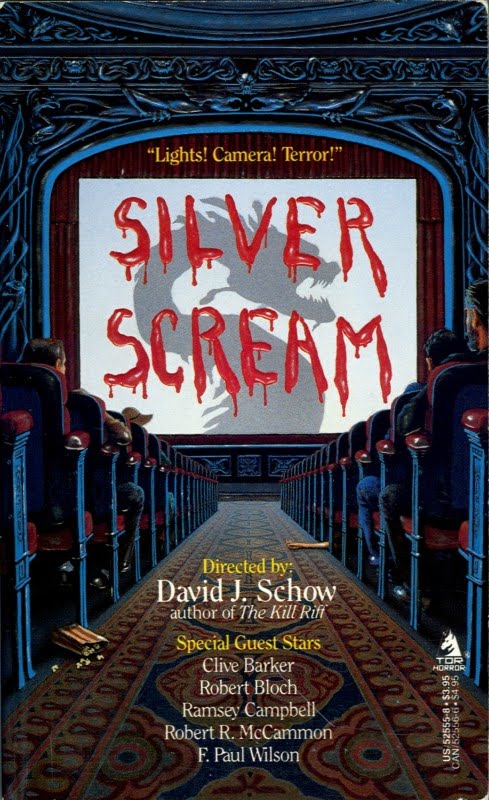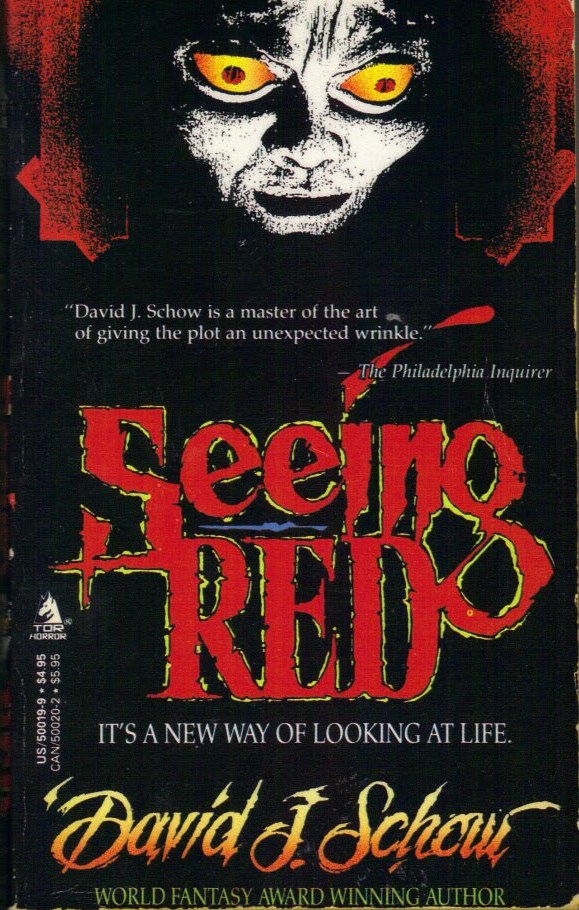If you were reading paperback horror fiction back in the 1980s, there’s a good chance you recall the red-hot minute of the graphic subgenre known as splatterpunk.
Surely I first read about it in the pages of Fangoria, or perhaps Twilight Zone, and I was instantly a fan even before I’d read any of the authors who supposedly were part of this new movement. As a fan of gory horror flicks and late 1970s punk rock, as well as being a teenager, this new wave of no-holds-barred horror was tailor-made for yours truly! I couldn’t get enough of books like The Scream, Live Girls, Books of Blood, The Nightrunners…
As to the origins of the term, most anecdotes point to David J. Schow who jokingly—perhaps cringingly—coining it in the mid-1980s in response to the William Gibson/Bruce Sterling/John Shirley-powered “cyberpunk” movement over there on the science fiction shelves. Never intended to be a hard-and-fast label, splatterpunk stuck for a few years, uniting disparate upcoming writers like Clive Barker, Joe R. Lansdale, John Skipp and Craig Spector, Ray Garton, Richard Christian Matheson, and others, informally known as the, um, “splat pack.” Look, it was the ’80s, all right?
Nobody really liked being labeled as such and so splatterpunk petered out as the ’90s wore on, just like the paperback horror industry as a whole. Today it’s remembered for introducing cinema-inspired graphic violence to horror, but to me it was more than that. Not solely gore for gore’s sake were the splatterpunks; this wasn’t just shock tactics without substance. No, these writers had ambition: they wanted to fuse extreme violence and horror (the “splatter”) with a confrontational social sensibility (the “punk”) to provide a countercultural, more streetwise take on our collective fears at the end of the century. It was not just extreme violence and viscera and degradation—psychological insight into alienated characters was as essential as blood-on-the-walls-and-ceiling taboo-smashing. Schow could do both easily. He is responsible for one of the more entertaining anthologies of the day, 1988’s rollicking Silver Scream, featuring movie-themed horror fiction, and some terrific short stories, collected in Seeing Red (January 1990). Both were Tor paperbacks with some really jazzy and garish covers, perfect for their era.

Despite Schow’s reputation as a writer who could gross out readers and critics at ten paces with tales of pustular zombies redolent of rot and gore (check out “Jerry’s Kids Meet Wormboy” in 1989’s zombie antho classic Book of the Dead), Schow is actually most adept at thoughtful, less extreme works. Maybe verbally manic and overwrought and a bit too self-consciously hip in that ’80s manner, his fiction is more concerned with basic human conflict rather than supernatural or splattery doings. Any such goings-on tend to be abstract metaphors for the elusive qualities of friendship, loyalty, honor, betrayal, identity, sex, and love—very much in the style of Harlan Ellison circa Strange Wine (1978) or Shatterday (1980), I realized upon this rereading.
The protagonists are hyper-articulate modern young men and women, often heartbroken or beaten up by life, often clueless for all their state-of-the-art status trappings, dodging the landmines of contemporary sexual politics. Schow gets the details about relationships romantic and platonic, fables about city life and industry careers and urban societal pressures, just right. But in slips just a touch, just a bare breath of the weird or the satanic, something arcane yet organic that butts up against all that steel and glass and marble and silk and black leather of Los Angeles near the end of the century.
“Red Light,” a 1987 World Fantasy Award-winning tale set San Francisco, was not originally intended to be part of this LA-based collection. The central conceit—that fame devours—is certainly timeworn by today’s paparazzi-dazzled media, but the carefully detailed setting and relationship between the photographer narrator and his long-lost love win out. You can hear echoes of seminal horror tales like Robert Bloch’s “The Model” and Fritz Lieber’s “The Girl with Hungry Eyes.” “Bunny Didn’t Tell Us” is a gleefully gross revenger about hapless graverobbers. “Incident on a Rainy Night in Beverly Hills” might be too much of a Hollywood in-joke; L.A. is Schow’s bread and butter and the movie industry figures largely in many tales here, but I found “Incident” distractingly talky. “Coming Soon to a Theater Near You” is one of two stories set in movie theaters, and is straight-up repulsive, flesh-crawling horror.
The willfully obnoxiously-titled “Blood Rape of the Lust Ghouls” is a true entertainment of a creepy gore-movie reviewer whose critical savaging of the titular film puts him in a delicate and unexpected place. This is the kind of insider-style horror story I truly dig. Another favorite is “One for the Horrors,” which has warmly occupied my heart of horror these many years. How could I not love a story about a movie theater that shows the movies that never were, shows the scenes the censors demanded cut, and is a love story about movie-lovers to boot? A graffiti sigil stands in for one story title, a tag from the great beyond: a seriously authentic tale of gnarly street-punk lowlifes hustling on Hollywood Boulevard. Schow’s detailing of a horrific car crash that kills one of the punks hits dead-on and also provides the collection with its title.
The star of Seeing Red is easily “Not from Around Here,” the last in the collection, and one not published previously. Herein Schow’s prose is more thoughtful and measured but not to fear: when the gore comes it’s graphic and upsetting. Set in the rural areas outside San Francisco, it’s sort of a story about a city slicker in the big bad woods who gets more than he bargained for. There are touches of King and T.E.D. Klein and Karl Edward Wagner, yes, but the sexual nature of the violence is presented in an unexpectedly new manner. “Not from Around Here” is actually scary, monster scary, which isn’t something you find in horror fiction as much as you’d think. But it’s about something too: there is bravery, loss, realization, and a new life to be had when fear is conquered.
Silver Scream was a treasured tome of my high school years. Schow edited the antho and filled it with a veritable who’s-who of ’80s horror: Ramsey Campbell, F. Paul Wilson, Robert McCammon, Douglas E. Winter, Mick Garris, as well as the aforementioned “splat pack.” How can you not love a horror anthology that contains Barker’s “Son of Celluloid,” Lansdale’s “Night They Missed the Horror Show,” Ray Garton’s “Sinema,” Winter’s “Splatter: A Cautionary Tale,” and Steven R. Boyett’s “The Answer Tree”? Jammed full of the bizarre, surreal, grotesque, ridiculous, violent, incomprehensible, Schow gives it to us all guns blazing. His rambling, chummy “End-Sticks” completes Silver Scream, a long personal anecdote about buddying around with those writers and encouraging them to write stories for him, all inspired by Hollywood and its mythic and monstrous dreams. Silver Scream is a complete blast, a detailed snapshot of the ’80s horror era. For horror readers who like their horror smart, graphic, cynical, modern but oh-so-very-’80s, you can’t do better than Schow.
Will Errickson covers horror from the ’60s, ’70s, and ’80s on his blog Too Much Horror Fiction.










